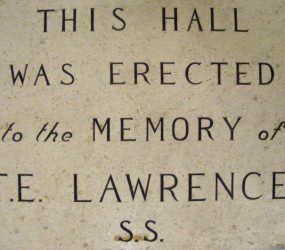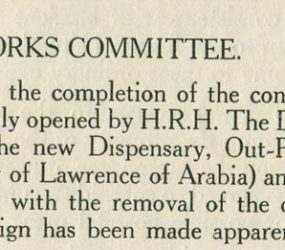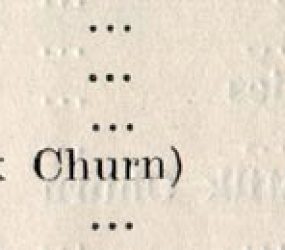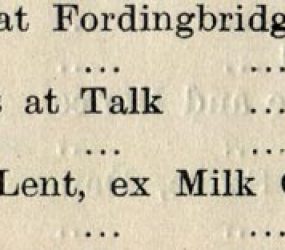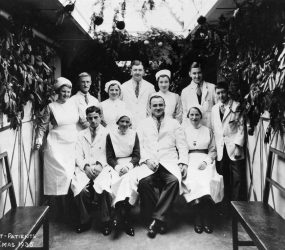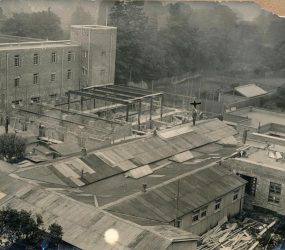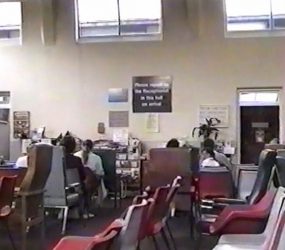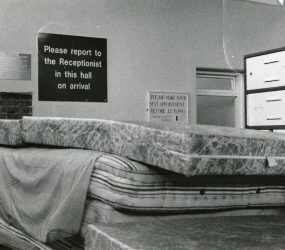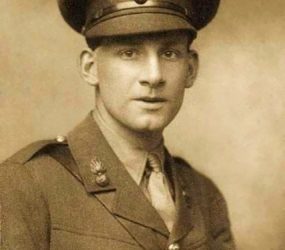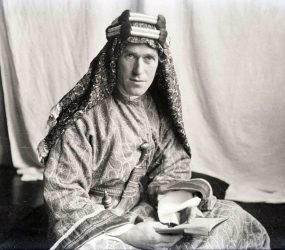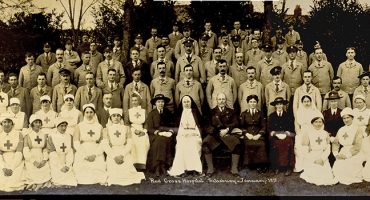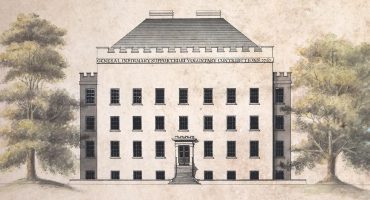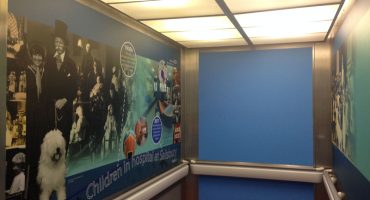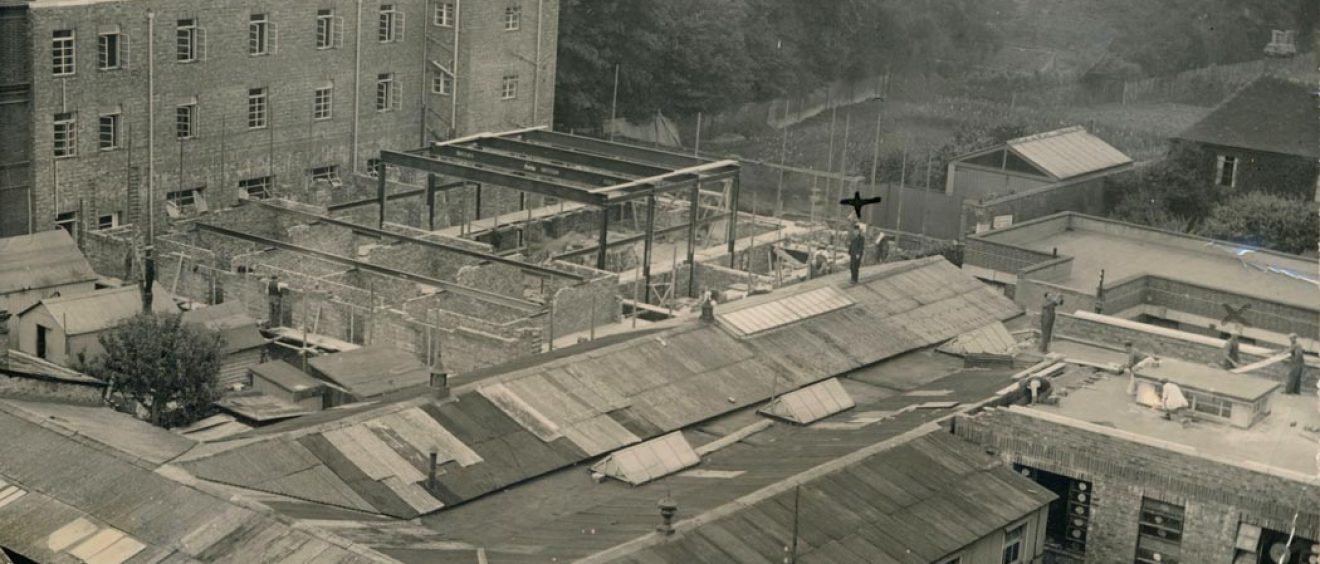
T E Lawrence and Salisbury Infirmary
In our collection we have the stone plaque from the Outpatients hall at Salisbury General Infirmary. Funding for the hall, built in 1936, was donated in memory of T E Lawrence by S.S. (Siegfried Sassoon 1886–1967). The rooftop photograph (above and below) is dated September 1936 and shows the construction of metal beams for new outpatient area. A photograph of the old outpatient corridors (below) taken at Christmas 1935 shows the walls decorated with branches.
Sassoon, war poet and novelist, lived in several Wiltshire homes (Bowerchalke, Teffont Magna and later at Heytesbury). He was decorated for bravery at the Front during World War 1, and his poetry described the horrors of the trenches. His brother Hamo was killed during the Gallipoli Campaign. After the war Sassoon travelled, wrote and lectured. Although he had a series of homosexual relationships during this time, in September 1931, Sassoon rented and began to live at Fitz House, Teffont Magna, Wiltshire. In December 1933, he married Hester Gatty and had a child.
Post-war he became friends with T E Lawrence who had a lot in common with him. Both writers they had earned a legendary reputation for their war time exploits. T E Lawrence ‘Lawrence of Arabia’ (1888-1935) gained renowned status after the work he did in the Middle East during the First World War. This prominence was fed after his untimely death from a motorbike accident, near Bovington in Dorset, in 1935 and became to subject of epic historical film ‘Lawrence of Arabia’ in 1962.
Funding the Salisbury Infirmary Outpatients Hall
A large amount of money was donated for the Outpatient Hall in 1936. At the time this was given anonymously; but given the presence of S.S. initials on the dedication stone it was fairly quickly deduced that this was Siegfried Sassoon. Extracts (below) from the Infirmary’s 1937 annual report show that £2000 was given anonymously – this would be be modern day equivalent of around £100k. Another clue to S.S. is that, in the same annual report, Mr Siegfried Sassoon gave a talk and autographs to benefit the hospital which raised £1 15s 0d.
It has been speculated this came from some financial income relating to his work on a film screenplay by Alexander and Zoltan Korda, who had bought the film rights to T E Lawrence’s ‘Revolt in the desert’. Lawrence had put a hold on the project and persuaded Alexander not to film during his lifetime – Korda probably little expecting this to be 3 months later when Lawrence died in a notorious motorbike accident. Sassoon then became involved with the screenplay for the project; however their working relationship soon fell apart after difference in writing styles and ideas. Later, the Korda’s finding it hard to finance the film, eventually sold the rights to producer Sam Speigel in 1961. Speigel was producer for Lawrence of Arabia film directed by David Lean released in 1962.
Other Salisbury connections…
In a letter from T. E. Lawrence to Dick Knowles dated 30/12/27, Lawrence writes:
I expect you find Salisbury too particularly military for your tastes to go wandering there. The best
of Salisbury is the green grass round the cathedral, and some of the houses in the Close. Though
there are good houses, old timber halls, in the town. I like Salisbury. Also I read in the papers
that they are at last trying to do something to clean up the skirts of poor desecrated Stonehenge.
It has become only its shadow, since the war, what with aerodromes and cottages and fences.
Once it stood all by itself on its grey hill, as you came from Amesbury, and was magnificent.
After Lawrence’s death there were plans to house a statue in Salisbury Cathedral, after St Paul’s Cathedral wouldn’t accept it (due to political unrest at the time). However, due to difference of opinion between the family and the church about where this was to be housed, the effigy was finally installed in Wareham near to Lawrence’s Clouds Hill home.

